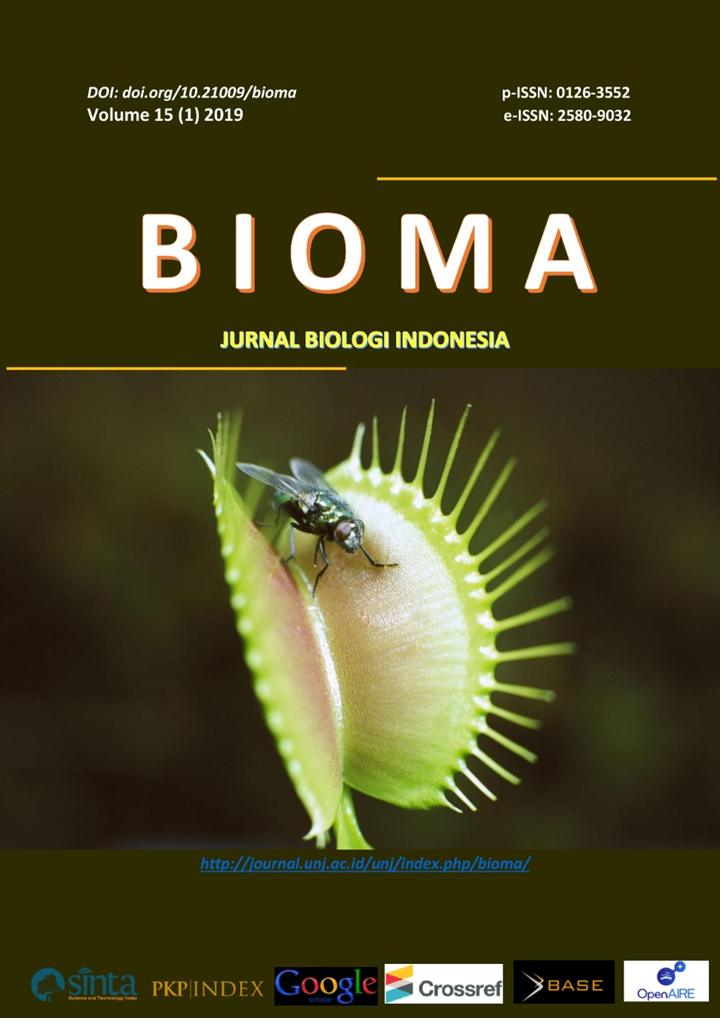PERKECAMBAHAN 4 AKSESI JEWAWUT (Setaria italica (L.) P. Beauv) PADA KONDISI CEKAMAN KEKERINGAN ARTIFISIAL
DOI:
https://doi.org/10.21009/Bioma13(1).6Keywords:
drought tolerance, lethal doses, PEG solution, germination percentageAbstract
Developing of jewawut cultivation as an alternative source of carbohydrates is one of the efforts to prevent food insecurity. Drought conditions and the availability of drought-tolerant seeds became one of the problems in the development of jewawut cultivation. The purpose of these experiments were to evaluate jewawut response to drought stress simulations at germination phases and to obtain accessions tolerant to drought stress. Drought stress is performed indirectly (PEG 6000 selective media). The research was done in Laboratory of Physiology of Faculty of Mathematic and Science, UNJ from February until July 2017. The experiments were done with a completely randomized design. Parameters of germination were analyzed with Anova test and continued by Duncan Multiple Range Test (DMRT). Lethal doses of PEG reducing 50% of germination (LD50) were 23,25%, with the quadratic equation y = 1,12-2,72x. The results base on germination phase, Buru merah as drought tolerance accessions, Polman merah and Polman kuning as medium tolerance accession, and Buru kuning as susceptible accessions.


